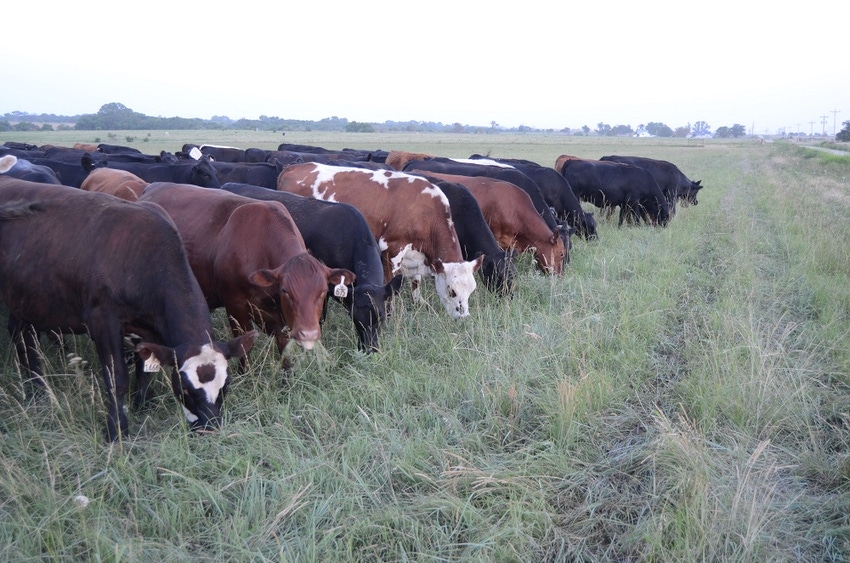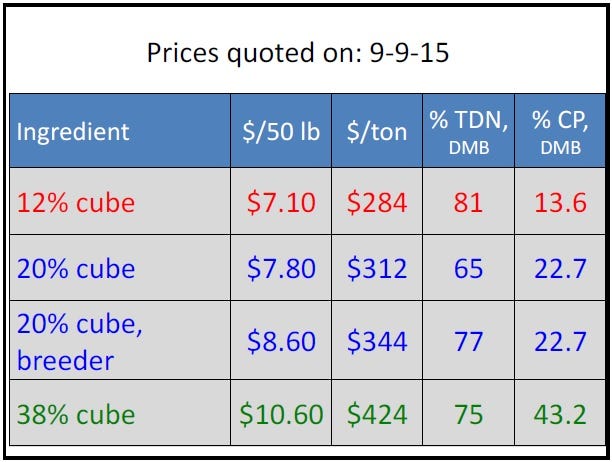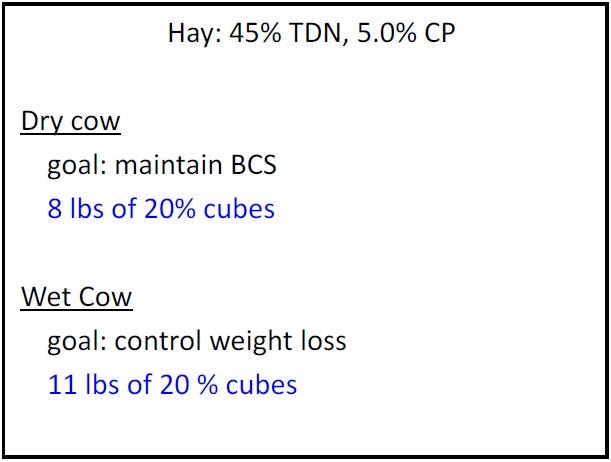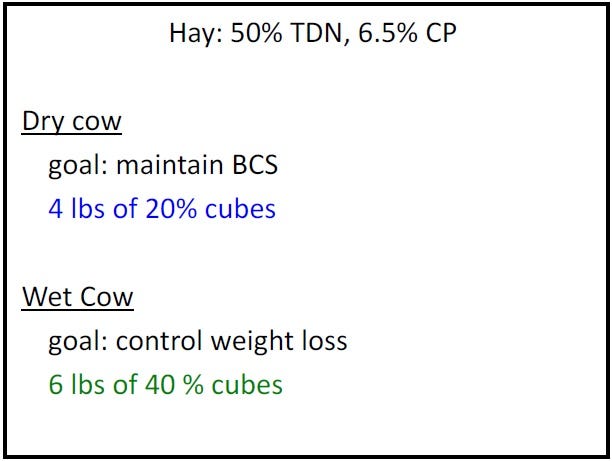
Too often beef producers think cubes is cubes, and whatever protein source is easy to find is therefore just fine.
That plainly isn't true, says Jason Banta, beef cattle specialist for Texas A&M AgriLife Extension Service. The price of supplements is highly varied, and all feeds are expensive, and spending more than necessary on a business expense is unwise.
Banta regularly teaches about balancing nutritional purchases to herd needs, and heavily focuses his talks on cattle cubes, which of course are the pellets many producers use for supplementation of protein and sometimes of energy. The principles are more widely applicable, however.
Banta's discussion centers on three foundational principles:
1. Understand the nutritional needs of your livestock, based on body condition score and needs for weight gain, maintenance or loss, and based on whether a cow is dry versus nursing a calf, or her stage of gestation.
2. Know the nutritional value of your forages through testing or learn to estimate it from manure appearance. Then supply what's needed to make up the deficit.
3. Focus on purchasing the nutrient you need to get the best buy. As an example, higher-protein products are usually a lower price per pound of protein.
4. Realize that you commonly pay more for feeds that offer convenience, such as cattle cubes, than for feeds that are more labor-intensive or equipment-dependent to handle, such as distiller's byproducts.
The nutritional needs of your stock depend on whether you're producing gain, which is a complex question, or whether you are maintaining cows, in which case your primary goal is to maintain a body condition score of No. 5 for cows 4 years and older by calving time, or a score of No. 6 for 2- and 3-year-olds, Banta says. If thinner, you will see significant fall-off in rebreeding performance.
Adding weight once they start lactating is almost impossible and very expensive, so you must plan ahead. If you are a winter/early-spring calver like most ranchers, you will need to maintain body weight, Banta says.
Realize, too, that cow stage of reproduction heavily influences nutritional needs. Peak lactation is the highest requirement. See Banta's chart of examples for Brahman-influenced cows at various stages of production. You'll need this kind of data for your cows and location.

Notice the large differences in the amounts of protein and energy needed by lactating cows versus dry, pregnant cows.
If you are using mostly stored forage, such as hay, then you should have representative forage samples to help you plan your next steps. Sample each cutting, he says. If you are depending on standing forage, you'll need to look at manure consistency as an indicator of forage quality.
Banta says in either case, it's important to remember forage quality decreases with forage physiological age, as both total digestible nutrients (TDN) and crude protein (CP) decrease. TDN indicates the energy content of the forage. Older forage has higher amounts of lignin, which reduces fiber digestibility.
So you'll look at the needs of your cattle in your environment and measure that against your hay or forage quality, then make up part or all of the difference, depending on your production goals.
Therefore, if your cattle need protein to make better use of dry winter forage, then protein is what you should price.
Look at Banta's chart of cube pricing from fall 2015 and you'll see the 38% protein cubes cost $424 per ton and have 43.2% CP on a dry-matter basis. That means you'll get 832 pounds of protein for your $424, which is 51 cents per pound.

This chart shows cube prices in Texas in September of 2015. These are used in the story examples of supplement calculations.
Then look at the regular 20% cubes, a common purchase at feed stores, and see they cost $312 per ton and have 22.7% CP on a dry-matter basis. That means you'll get 454 pounds of protein for your $312, which is almost 69 cents per pound.
Easy to see which is the better buy.
Let's suppose, however, you're a little short on forage and think you might want to feed some energy along with your protein supplement and since you're feeding cubes anyway ...
You'll need to compare the cost of the energy among cubes and with other energy sources, such as hay.
The TDN in 38% cubes costs 28 cents per pound, the TDN in the 20% cubes costs 24 cents per pound, the TDN in the higher-energy breeder cubes costs 22 cents per pound, and the TDN in the 12% cubes costs less than 18 cents per pound.

This example uses free-choice hay and shows calculations for supplementing lower-quality hay with supplements that match.
One thing to remember is that certain high-protein feeds, like cottonseed meal, soybean meal, and 40% cubes, can be fed every second or third day just as effectively as daily, but energy needs to be fed daily to be most effective.
Banta also warns that larger amounts of grains or concentrate (high TDN) must be worked up to or you can create ruminal acidosis and multiple related problems.
Put a pencil to it so you can get the job done as affordably as possible and make a profit.

This example uses free-choice hay and shows calculations for supplementing higher-quality hay with supplements that match.
About the Author(s)
You May Also Like




